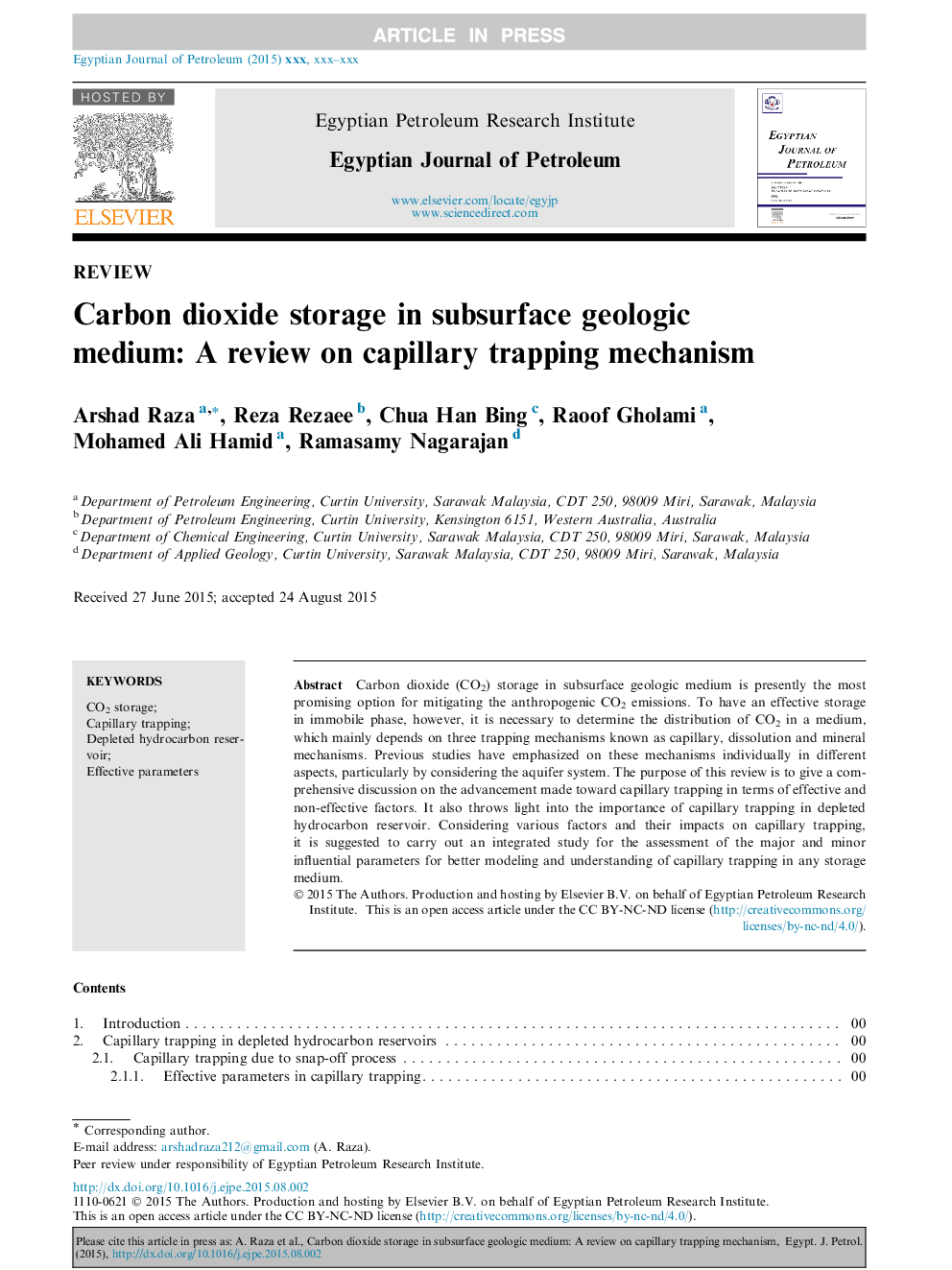| Article ID | Journal | Published Year | Pages | File Type |
|---|---|---|---|---|
| 5484658 | Egyptian Journal of Petroleum | 2016 | 7 Pages |
Abstract
Carbon dioxide (CO2) storage in subsurface geologic medium is presently the most promising option for mitigating the anthropogenic CO2 emissions. To have an effective storage in immobile phase, however, it is necessary to determine the distribution of CO2 in a medium, which mainly depends on three trapping mechanisms known as capillary, dissolution and mineral mechanisms. Previous studies have emphasized on these mechanisms individually in different aspects, particularly by considering the aquifer system. The purpose of this review is to give a comprehensive discussion on the advancement made toward capillary trapping in terms of effective and non-effective factors. It also throws light into the importance of capillary trapping in depleted hydrocarbon reservoir. Considering various factors and their impacts on capillary trapping, it is suggested to carry out an integrated study for the assessment of the major and minor influential parameters for better modeling and understanding of capillary trapping in any storage medium.
Related Topics
Physical Sciences and Engineering
Energy
Energy (General)
Authors
Arshad Raza, Reza Rezaee, Chua Han Bing, Raoof Gholami, Mohamed Ali Hamid, Ramasamy Nagarajan,
